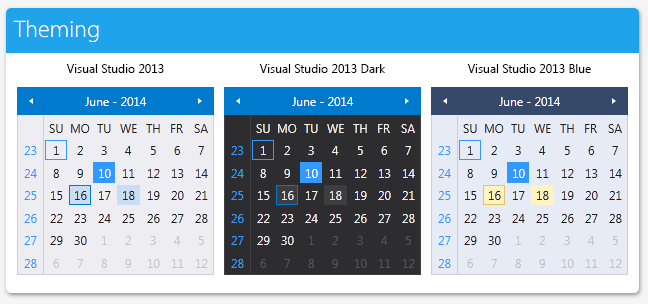Free Xaml Designer Tool
What tool are you using to draw the elements of a WPF application? Do you edit the XAML manually or do you use any tool? Do you know a tool which is easy to use? Four Free XAML Editors Reviewed I like to type XAML. It’s an extremely flexible and expressive way to work when sketching out the logical structure of a new piece of UI. A graphical design tool like Blend is best for some things, like creating a non-trivial gradient brush, but at some point it all comes down to the code. To satisfy my need for speed and create a sense of flow I need a fast. Sep 15, 2015 - The new XAML tools provided in Visual Studio 2015 helps. The UI Designer uses Blend to manage XAML design using design templates, styles. To this magazine for FREE and download all previous and current editions.
Most of the content in this SDK documentation is focused on creating WPF applications 'by hand,' meaning typing the XAML markup and code that comprises the application UI and functionality. However, especially in the case of creating visual presentation and behavior (UI, graphics, animation, and so on), it is often faster and easier to use a design tool. This overview briefly introduces several Microsoft design tools:
·Microsoft Expression Design: This tool is aimed at designers and artists who require a powerful drawing tool. All art created in Expression Design can be exported as XAML, making it easy for a designer to hand off artwork to WPF developers.
·Microsoft Expression Blend: This tool is used to create WPF UI presentation and behavior.Blend integrates with Expression Design and Visual Studio to blend together a full WPF design/development solution.
·WPF Designer: This is part of Visual Studio 2008 and lets you create your UI, via a graphical user interface or by editing XAML, in the same tool that you use to write your application.
·XAMLPad: A lightweight simple editor that shows the results of XAML as you type.
Microsoft Expression Design

Expression Design is a specialized drawing tool used to create vector-based art that can be exported as a normal image or as XAML. This tool is designed to be used by artists or designers to create art and then use another tool to integrate the art into a WPF application. For example, an artist could create a high-quality graphic with Expression Design and then hand that art off as a XAML file to a developer using Expression Blend or another development tool. For a list of features or to download this tool, see Microsoft Expression Design.
Microsoft Expression Blend
Expression Blend is used to create WPF applications and is particularly well suited to designing UI presentation and behavior. In Blend you can specify the look and layout of UI controls and other application objects, create property triggers, and add animations. In addition, you can simplify management of your UI by using styles, control templates, and resources. All of these things can be done using the Blend Design Mode, or you can toggle to see and edit the XAML markup directly. When you need to change code used for application logic (for example, when you open a C# file), Blend opens the file in Visual Studio or another development tool. For a list of features or to download this tool, see Microsoft Expression Blend.
WPF Designer
The WPF Designer is part of Visual Studio 2008 and provides visual design support. While Expression Blend is a powerful tool that allows you to fully customize your application's UI without editing the XAML, you can also use the WPF Designer's graphical user interface to build the UI of an app within Visual Studio. You can build user interfaces for your applications by dragging controls from the Toolbox and setting properties in the Properties window. You can also edit XAML directly in the XAML editor. For more information, see Jim Galasyn's blog or James Nakashima's blog.
XAMLPad
XAMLPad is a lightweight editor that ships for free with the SDK. With XAMLPad, you can type XAML in the editor while the resultant presentation is displayed as you type. If you have the SDK installed, you can find XAMLPad in the Tools folder. (Click Start, point to All Programs, click Microsoft Windows SDK, click Tools, and then click XAMLPad.)
Wpf Xaml Designer
I agree.
I also see they don't have the manpower. Tool are awesome but you have to have the guts under them or they have nothing to control.
Until they get the eco-system/infrastructure finished the tools won't have much purpose. Still no merge-dictionary on par with WPF... No ViewBox... No horizontal layout for a ListView... Even the simple Label still has alignment problems when binded. Can't bind/pass anything that evaluates to null to a converter, and 100 other foundation items that don't exist in Xamarin that WPF developers have had for a decade. Instead of resolving everything in the Bugzilla they simply 'migrated' away from it hoping all the unfinished work would fall through the cracks and be forgotten about. That's no way to support the people who were early adopters and found all those problems for you and took the time to document them in the hopes they would be resolved.
I'll be happy to use nifty visual design tools when they get made. I would just prefer they get prioritized after the work in the guts of the eco-system.